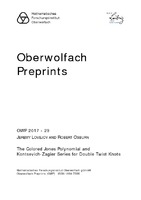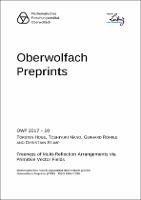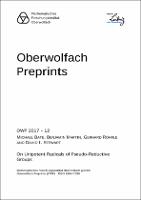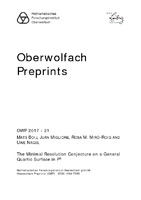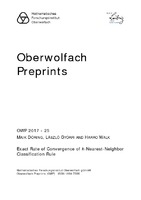Search
Now showing items 31-36 of 36
The Colored Jones Polynomial and Kontsevich-Zagier Series for Double Twist Knots
[OWP-2017-29] (Mathematisches Forschungsinstitut Oberwolfach, 2017-10-20)
Using a result of Takata, we prove a formula for the colored Jones polynomial of the double twist knots K(−m,−p) and K(−m,p) where m and p are positive integers. In the (−m,−p) case, this leads to new ...
Freeness of Multi-Reflection Arrangements via Primitive Vector Fields
[OWP-2017-10] (Mathematisches Forschungsinstitut Oberwolfach, 2017-04-20)
In 2002, Terao showed that every reflection multi-arrangement of a real reflection group with constant multiplicity is free by providing a basis of the module of derivations. We first generalize Terao's result to ...
Reducing sub-modules of the Bergman module A(λ)(Dn) under the action of the symmetric group
[OWP-2017-19] (Mathematisches Forschungsinstitut Oberwolfach, 2017-07-20)
The weighted Bergman spaces on the polydisc, A(λ)(Dn), λ>0, splits into orthogonal direct sum of subspaces Pp(A(λ)(Dn)) indexed ...
On Unipotent Radicals of Pseudo-Reductive Groups
[OWP-2017-12] (Mathematisches Forschungsinstitut Oberwolfach, 2017-04-27)
We establish some results on the structure of the geometric unipotent
radicals of pseudo-reductive k-groups. In particular, let k′ be a purely
inseparable field extension of k of degree pe and let G denote the ...
The Minimal Resolution Conjecture on a general quartic surface in P3
[OWP-2017-21] (Mathematisches Forschungsinstitut Oberwolfach, 2017-07-27)
Mustaţă has given a conjecture for the graded Betti numbers in the minimal free resolution of the ideal of a general set of points on an irreducible projective algebraic variety. For surfaces in P3 this conjecture ...
Exact Rate of Convergence of k-Nearest-Neighbor Classification Rule
[OWP-2017-25] (Mathematisches Forschungsinstitut Oberwolfach, 2017-10-16)
A binary classification problem is considered. The excess error probability of the k-nearest neighbor classification rule according to the error probability of the Bayes decision is revisited by a decomposition of the ...

